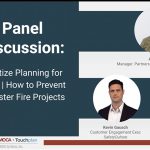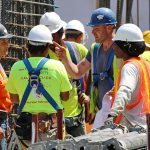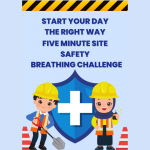What are a Superintendent’s primary responsibilities? Safety, Quality, Schedule. Prioritized in that order.
We talk a lot about how certain scheduling and communication techniques can drive efficiency into a job, but a project cannot be successful without first holistically addressing safety.
Think ‘Mazlow’s Hierarchy of Needs’ which basically says that without a sense of safety, higher-order levels of performance and cognition are not possible. The workforce has to be 100% confident that their individual actions ensure they go home the same way they came to work.
Do we get anything done if all we focus on is safety? Absolutely not. Despite its utmost importance, safety culture can be enthusiastically taken in the wrong direction with the best of intentions. But make no mistake: there is a no more worthy expenditure of resources than to sustain and improve safety on a jobsite.
Mike Rowe and ‘Safety Third’
I’m a huge fan of Mike Rowe’s take on ‘Safety Third’. Don’t interpret this statement to be a contradiction of the main idea. He’s not saying that safety isn’t important, but instead that the workforce needs to understand…. not just hear it over and over…but really understand that every time they go to work that they have a personal responsibility for their own safety. No one cares as much about you going home safe as you do.
Sometimes organizations can twist safety culture by taking an approach that suggests other people are watching out for them. It’s a trap baited by emotion. Everyone wants others to know that they care, but is creating a false sense of security the way to do it? I would argue that this approach actually runs the risk of putting people in danger.
Construction is inherently dangerous and both the individual and the organization have a responsibility when it comes to safety. It gets hot in Texas during summer and with that comes added risk of heat-related injuries. Contractors are required to provide a safe working environment, however, do owners have to spend money on popsicles and air-conditioned break space for everyone? I’m not advocating against air conditioning, but I can’t help but think that supervisory actions by foremen and superintendents to thoroughly assess fit-for-duty prior to starting work are far more effective.
What exactly do contractors owe and how do they make sure their safety program is effective? OSHA regulations are a baseline, and what is even more effective is coupling that with a bit of common sense-driven policy that originates from putting yourself in the worker’s shoes. Think about it. If you are the one making policy, examine the impacts from the perspective of the person doing the work with an understanding that they are willfully working in a potentially dangerous environment.
What does supervisory responsibility for safety look like? Really, it’s showing you care with your actions. Make sure the toilets and break areas are clean, check daily equipment inspection tags, and yes every once in a while do something nice like a catered lunch to show appreciation for safe work. Just don’t overdo the speeches and ‘freebies’ for popularity points. Our jobsites are far removed from crab boats in the Bering Sea, but I guarantee every one of them has a few 6’ A-frame ladders in use. Push awareness to create vigilance, and hold people accountable for shortcomings. Leave cheerleading to the professionals.
If you are interested in some additional Safety Week content please read Private Eyes: Construction Safety is Isn’t Just About a Week.










